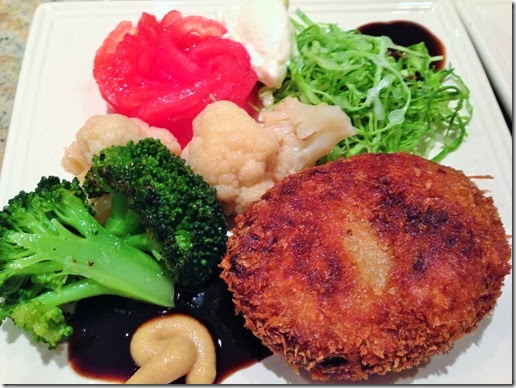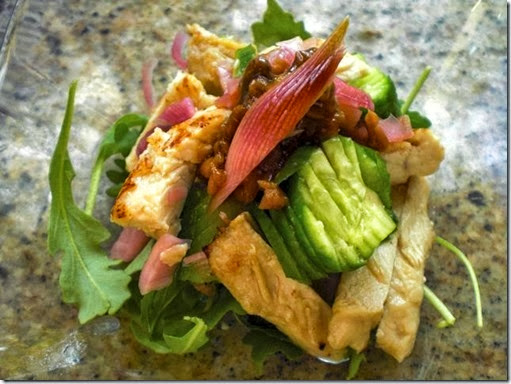Although I posted
blackened Brussels sprouts salad before, we made some variations after Thanksgiving when we made blackened Brussels sprouts. This was also inspired by the dish we had recently at
Nojo restaurant.
The first picture below is a combination of baked chestnuts and blackened Brussels sprout seasoned with a bit of syrupy balsamic vinegar and Japanese red pepper flakes (Ichimi tougarashi 一味唐辛子). The addition of chestnuts is my wife's idea. We took a short cut and used
whole roasted chestnuts in a jar.

This one is placed on the bed of baby arugula and dressed with a mixture of soy sauce, balsamic vinegar, Japanese red pepper flakes.

Making blackened Brussels sprout cannot be easier except for the preparation of the Brussels sprouts which is a bit tedious.
Wash and cut the bottom to remove outer (blemished) layers. If large, I cut them into half or quarters (to increased the surface which can get blackened).
Place the prepared Brussels sprouts in the bowl, add enough olive oil to coat the Brussels sprouts. Then sprinkle on salt and pepper and toss to coat. Spread the Brussels sprouts on the cookie sheet with cut side down and bake it for 45 minutes in a preheated 375F oven (#1).
Add the prepared chestnuts (cut in half or quarters) for the last 15 minutes or bake the chestnuts for 15 minutes separately (#2) then mix into the blackened Brussels sprouts (#4).
I made the dressing (#3) which is a mixture of balsamic vinegar, soy sauce, honey and olive oil. Later we tried just a small drizzle of a good syrupy Balsamic vinegar and red pepper flakes. The latter was as good or even better. So I would not bother to make a dressing.

This dish is very good cold or room temperature, although hot out of the oven is the best. It does heat up nicely in a microwave oven as well.
I did not imagine I would say "I love Brussels sprouts" but I do now.
















